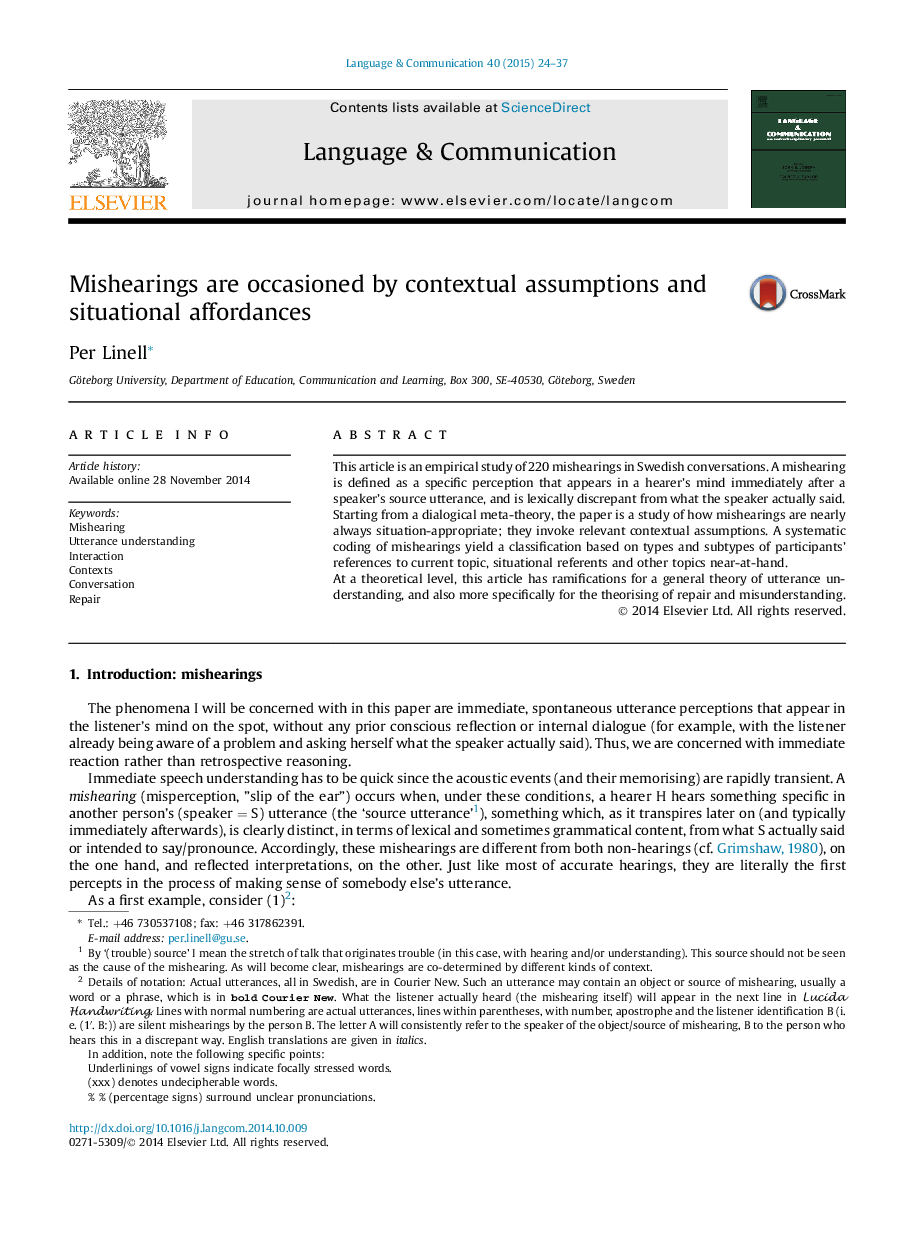| Article ID | Journal | Published Year | Pages | File Type |
|---|---|---|---|---|
| 934905 | Language & Communication | 2015 | 14 Pages |
•Mishearings are listeners' spontaneous perceptions of speakers' utterances that deviate from the latters' wordings.•Mishearings are overwhelmingly situation-appropriate, and classifiable into a small number of contextual types.•Mishearings are often followed by interactional sequences that include repair.•Mishearings seldom lead to permanent misunderstandings.•They contradict linear and support dialogical models of utterance understanding.
This article is an empirical study of 220 mishearings in Swedish conversations. A mishearing is defined as a specific perception that appears in a hearer's mind immediately after a speaker's source utterance, and is lexically discrepant from what the speaker actually said.Starting from a dialogical meta-theory, the paper is a study of how mishearings are nearly always situation-appropriate; they invoke relevant contextual assumptions. A systematic coding of mishearings yield a classification based on types and subtypes of participants' references to current topic, situational referents and other topics near-at-hand.At a theoretical level, this article has ramifications for a general theory of utterance understanding, and also more specifically for the theorising of repair and misunderstanding.
